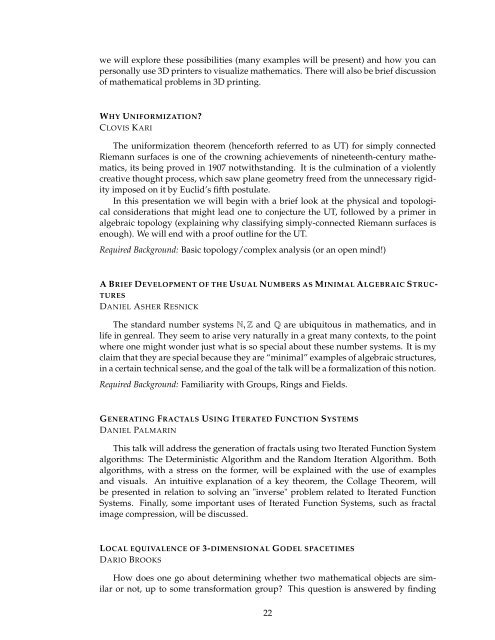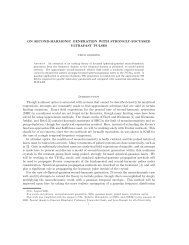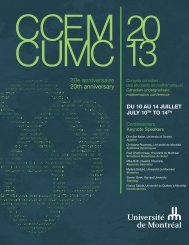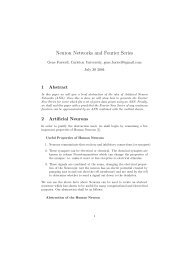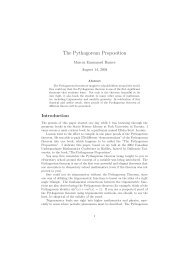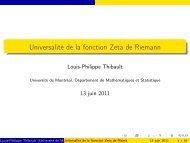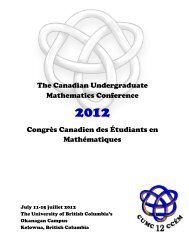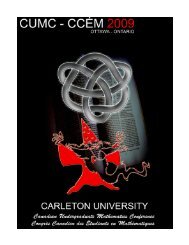booklet - CUMC - Canadian Mathematical Society
booklet - CUMC - Canadian Mathematical Society
booklet - CUMC - Canadian Mathematical Society
You also want an ePaper? Increase the reach of your titles
YUMPU automatically turns print PDFs into web optimized ePapers that Google loves.
we will explore these possibilities (many examples will be present) and how you canpersonally use 3D printers to visualize mathematics. There will also be brief discussionof mathematical problems in 3D printing.WHY UNIFORMIZATION?CLOVIS KARIThe uniformization theorem (henceforth referred to as UT) for simply connectedRiemann surfaces is one of the crowning achievements of nineteenth-century mathematics,its being proved in 1907 notwithstanding. It is the culmination of a violentlycreative thought process, which saw plane geometry freed from the unnecessary rigidityimposed on it by Euclid’s fifth postulate.In this presentation we will begin with a brief look at the physical and topologicalconsiderations that might lead one to conjecture the UT, followed by a primer inalgebraic topology (explaining why classifying simply-connected Riemann surfaces isenough). We will end with a proof outline for the UT.Required Background: Basic topology/complex analysis (or an open mind!)A BRIEF DEVELOPMENT OF THE USUAL NUMBERS AS MINIMAL ALGEBRAIC STRUC-TURESDANIEL ASHER RESNICKThe standard number systems N, Z and Q are ubiquitous in mathematics, and inlife in genreal. They seem to arise very naturally in a great many contexts, to the pointwhere one might wonder just what is so special about these number systems. It is myclaim that they are special because they are “minimal” examples of algebraic structures,in a certain technical sense, and the goal of the talk will be a formalization of this notion.Required Background: Familiarity with Groups, Rings and Fields.GENERATING FRACTALS USING ITERATED FUNCTION SYSTEMSDANIEL PALMARINThis talk will address the generation of fractals using two Iterated Function Systemalgorithms: The Deterministic Algorithm and the Random Iteration Algorithm. Bothalgorithms, with a stress on the former, will be explained with the use of examplesand visuals. An intuitive explanation of a key theorem, the Collage Theorem, willbe presented in relation to solving an "inverse" problem related to Iterated FunctionSystems. Finally, some important uses of Iterated Function Systems, such as fractalimage compression, will be discussed.LOCAL EQUIVALENCE OF 3-DIMENSIONAL GODEL SPACETIMESDARIO BROOKSHow does one go about determining whether two mathematical objects are similaror not, up to some transformation group? This question is answered by finding22


